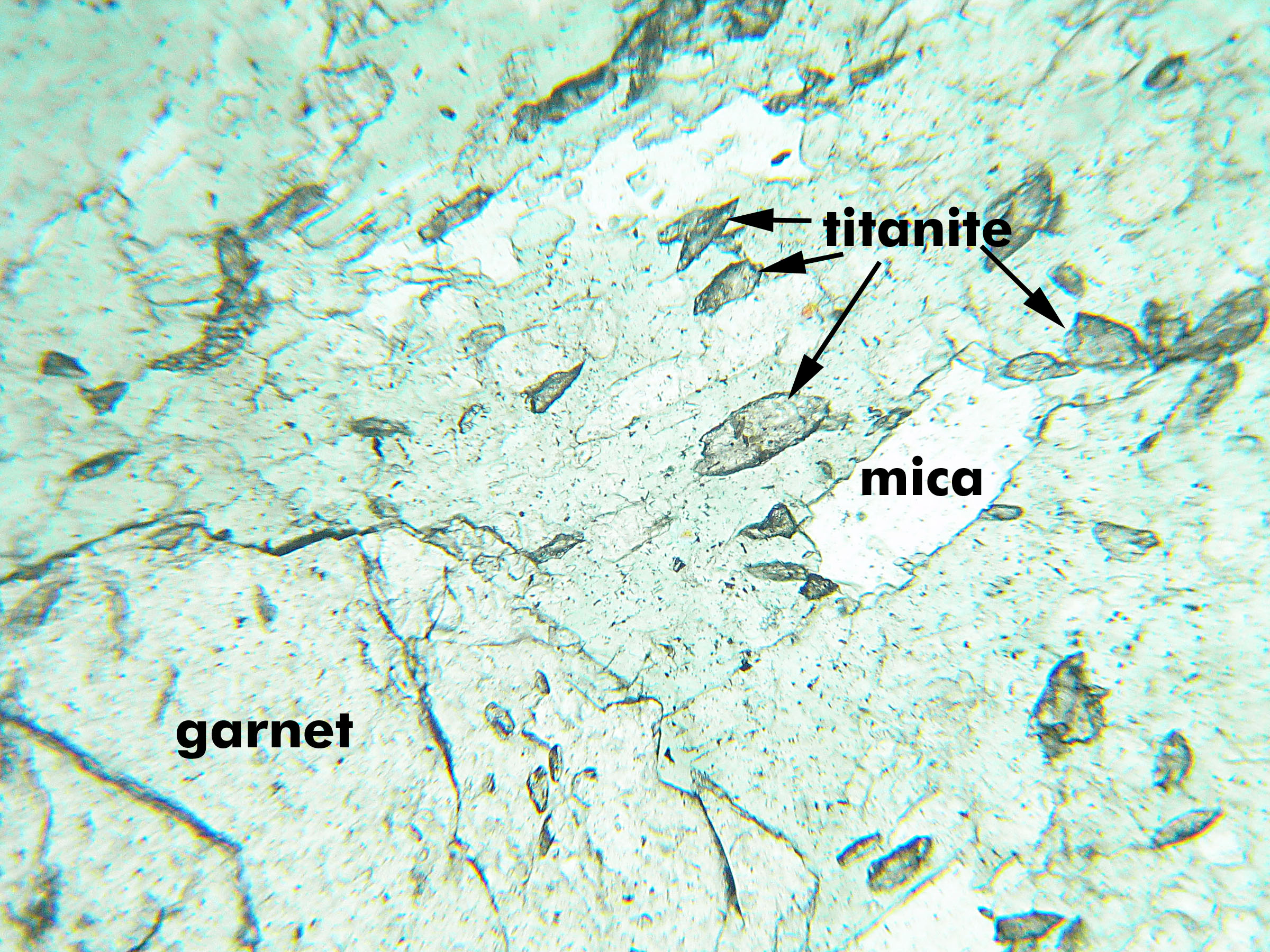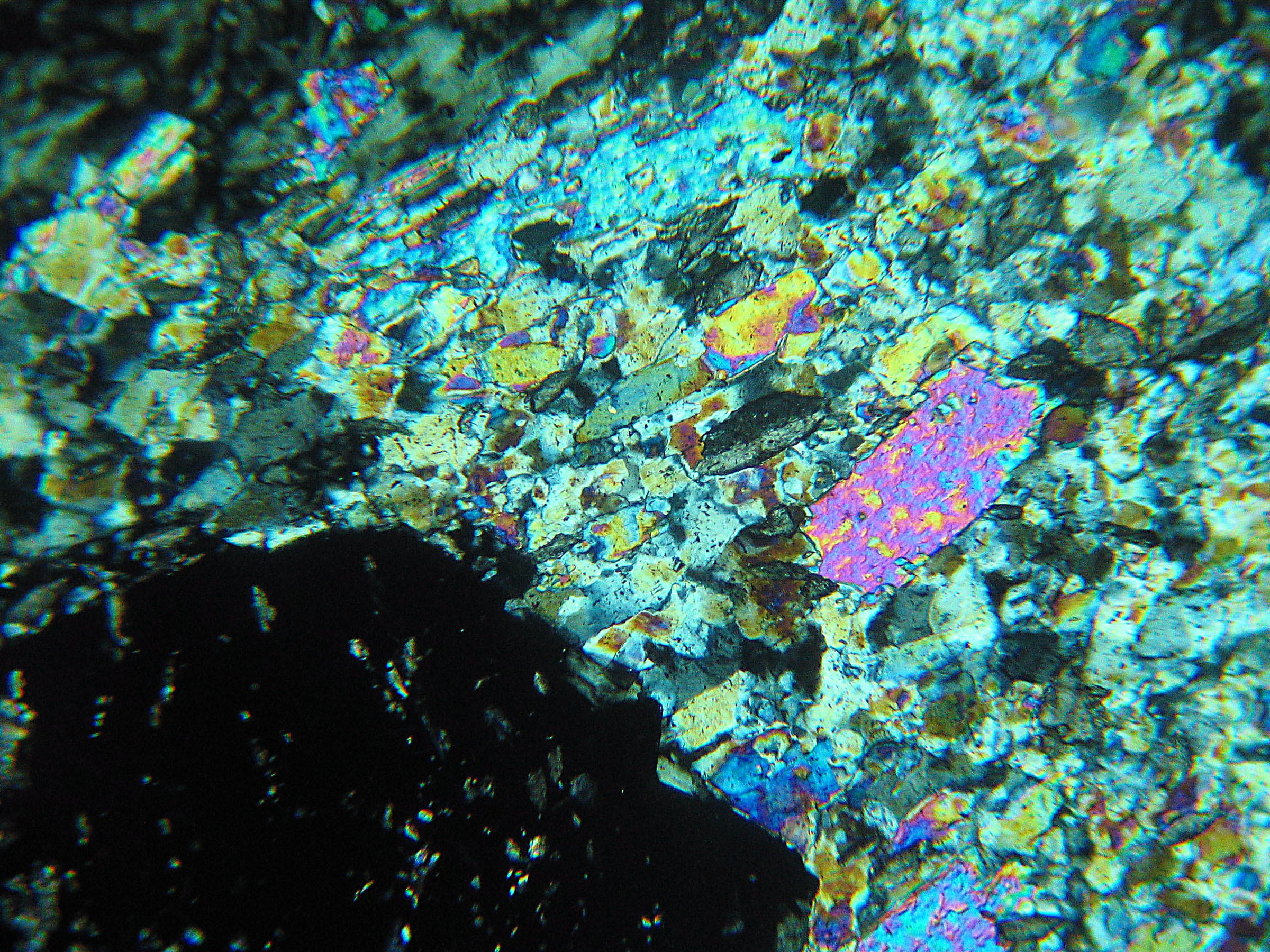Titanite (sphene) in a Quartz Monzonite from Garfield, Colorado


This view shows a titanite "wedge" surrounded by magnetite, quartz and feldspar, and minor epidote and chlorite. The titanite has very high relief and its interference colors are of such high order that they are hard to identify. The "wedge" or diamond shape of this grain is typical for titanite when it is euhedral (in many rocks it is not). Just above and to the right of the titanite is a compound grain composed of epidote (high order blue-orange-red interference colors) and chlorite (green in PP, nearly extinct in XP). Also present are three grains of magnetite (opaque).
The field of view is about 2.5 mm.




